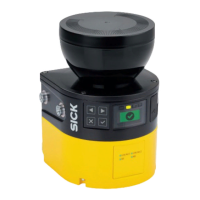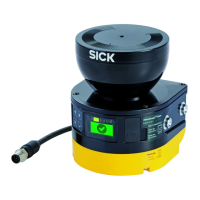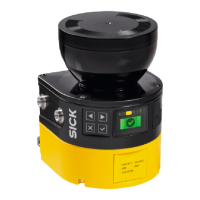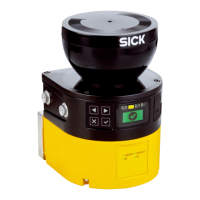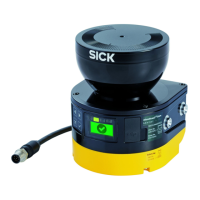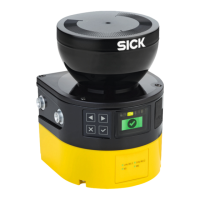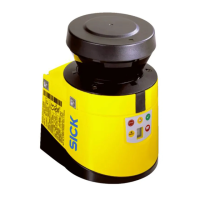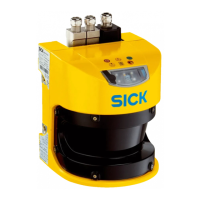4.4.2 Voltage supply
DANGER
H
azard due to lack of effectiveness of the protective device
In the case of non-compliance, it is possible that the dangerous state of the machine
may not be stopped or not stopped in a timely manner.
b
Make sure that the following control and electrical requirements are met so the
safety laser scanner can fulfill its protective function.
•
T
he power supply unit must be able to jumper a brief power failure of 20 ms as
specified in IEC 60204-1.
•
The safety laser scanner requires a supply voltage of 24 V. For details about
tolerances and further connected loads, see "Data sheet", page 165.
•
The power supply unit must provide safe isolation according to IEC 61140 (SELV/
PELV as per IEC 60204-1).
13)
•
Make sure that the safety laser scanner is provided with an appropriate electrical
fuse protection. Electrical data for calculating what fuse is required, see "Data
sheet", page 165.
•
Use the same earthing method for all devices that are electrically connected to the
safety laser scanner.
•
Voltage must be supplied in accordance with SELV/PELV (IEC 60204-1) for all
devices that are electrically connected to the safety laser scanner.
4.4.3 USB connection
The safety laser scanner has a USB connection for configuration and diagnostics.
T
he USB connection complies with the USB 2.0 mini-B standard (female connector).
The USB connection may only be used temporarily and only for configuration and diag‐
nostics. More information: see "Configuration", page 85 and see "Troubleshooting",
page 149.
4.4.4 PROFINET
PROFINET (Process Field Protocol) is an Ethernet-based network used in industrial
automation.
With PROFIsafe , PROFINET is also suitable for safety-oriented data communication.
The connection can also be used for configuration, diagnostics, and data output.
Information about pin assignment: see "Ethernet for PROFINET PROFIsafe, data output,
configuration and diagnostics (XF1, XF2)", page 83
4.4.5 Restart interlock
Depending on the regulations which apply at the place of installation, a restart interlock
ma
y be required.
The restart interlock prevents the machine from automatically starting up, for example
after a protective device has responded while the machine is operating or after chang‐
ing the machine’s operating mode.
First, the operator must press a reset pushbutton to return the protective device to
monitoring status. Then, in a second step, the operator can restart the machine.
Depending on applicable national regulations, a restart interlock must be available if it
is possible to stand behind the protective field.
13)
T
he voltage supply according to SELV has proven to be more reliable in demanding environments.
4 P
ROJECT PLANNING
62
O P E R A T I N G I N S T R U C T I O N S | microScan3 – PROFINET 8021219/1ELL/2022-01-21 | SICK
Subject to change without notice
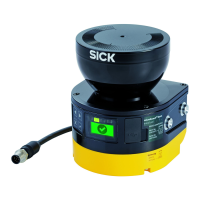
